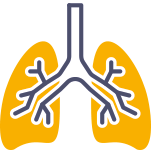Lancashire
Our 2022 regional report found that Lancashire is broadly in line with the average rates for cancer across the North West. However, of the 25 surveyed, it tracks above average for 15 cancer types.
Our 2022 regional report found that Lancashire is broadly in line with the average rates for cancer across the North West. However, of the 25 surveyed, it tracks above average for 15 cancer types.








Rates of cancer in Lancashire are 7% higher than the national average. However, overall cancer rates are broadly in line with the North West average.
Economically, the county is the most diverse in the region. Lancashire is home to both Blackpool, with some of the most deprived communities in England, and the Ribble Valley, one of the country’s wealthiest areas. The county’s under-55s comprise approximately 68% of the population, with 19% of the population over 65.
Around 27% of the population in Lancashire work in routine or manual roles, while 27% have managerial, administrative, or professional occupations.
Students comprise 9% of the population, while 6% of people living in the county are long-term unemployed or have never worked.
In Lancashire, incidences of lung cancer are 9% above the national average. However, this still tracks well below the North West’s lung cancer rates which are 20% higher than the English average.
Lancashire also has a much lower liver cancer incidence rate than the North West average, with liver cancer cases in line with the national average.
Bladder and cervical cancer rates in Lancashire are significantly higher than the national average, at 26% and 21%, respectively. The county also faces high head and neck cancer rates, 19% higher than the national average.
In our full report, you can learn more about our research into cancer incidence rates across the North West and North Wales.